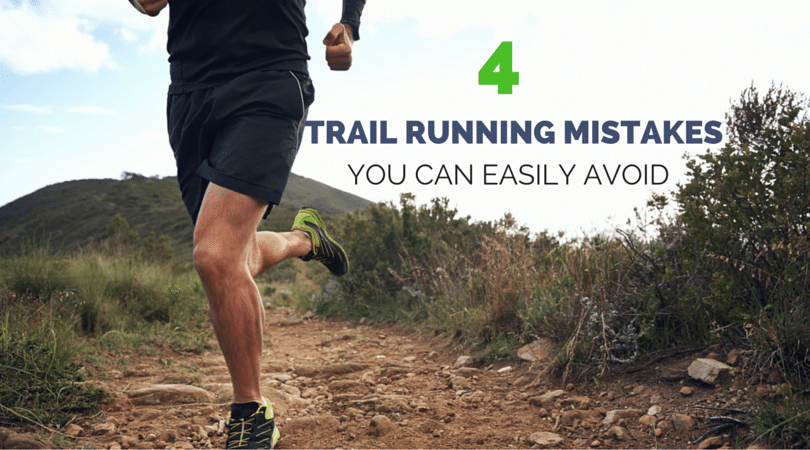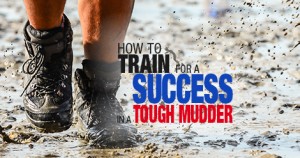Are you tired of the crowds and big-city pomp at road races?
Looking for a different kind of running challenge?
Maybe you should give trail racing a shot.
If your running has become a little stagnant, or you feel like it is time for switching it up, especially as a masters runner (we have plenty of articles for you on our brand new masters page!), giving trail racing a try could be just what you need.
Today, we are going to share the basics of how to switch over from years of loyalty to the roads, over to the exciting new world of trail racing. In the past we showed you how to sprain-proof your ankles; a common injury for trail racers, but now we are going to go deeper into what training requirements are needed to learn to trail run.
How Do I Train for Trail Racing?
Broadly speaking, the basic premise of a trail race is the same as a road race—run as fast as you can for a certain distance.
Except this time, there is one major difference:
The terrain.
Running on dirt and loose-packed rocks as opposed to asphalt and concrete results in a number of changes in how you run, and these changes have significant implications when it comes to how you should alter your training when preparing for a trail race.
How does trail running affect my feet?
The main distinguishing factors of trail running are all pretty obvious: trails are uneven, softer, and usually involve running up and down more hills than running on the roads. Each of these has consequences when it comes to how to get ready for a trail race, especially those pesky sprained ankles that we try to prevent from occurring.
The soft, uneven surfaces you’ll encounter when running trails may decrease stress on your shins, and prevent shin splints, but this comes at the expense of increased stress on your feet.
Now:
A 2014 study by Martin Hoffman and Eswar Krishnan found that ultramarathoners, who train and race on trails much more often than typical road runners, had a higher-than-average incidence of metatarsal stress fractures (considered a high risk injury), but lower incidence of tibial stress fractures1 aka shin splints.
Why did this happen?
Trail running shoes, with their stiffer midsoles and rock plates, may also be responsible for the observed increase in metatarsal injuries.
How do I train for it?
Firstly:
If you’re just getting in to trail running, it’s probably better to hold off on trail shoes unless you really need them. It’s better to introduce new stresses on your body one at a time.
Start off slowly when it comes to the transition period from your everyday or road running shoes (especially if they are maximalist shoes) into your trail racing shoes.
When it comes to training your feet to limit the likelihood of metatarsal stress fractures, we recommend strengthening the muscles in your feet. We talked about the importance of foot core in a previous post, but the primary exercise that will help with prevention is the foot shortening exercise from McKeon (who we interviewed on our podcast recently).
The foot shortening exercise is performed by sitting in a chair with your foot planted normally on the ground, then using only your plantar intrinsic muscles (the ones underneath your arch) to “shorten” your foot and raise your arch.
This exercise along with the calf and achilles exercises we recommend, will strengthen those muscles in your feet to limit overloading when you do switch over to the trails.
How does trail running affect my muscles?
The demands of trail running also put slightly different stresses on the muscles in your legs. Because trails are softer and uneven, your body has to “pre-tune” your muscles differently to cushion the impact of running.
On the roads, your body counters the firmness of the road by setting your muscular tension lower, so your leg muscles shock more slowly. On a soft surface, your body sets your muscle tension higher, so they absorb the shock of impact more rapidly.2
This is a good thing—it means that the overall impact forces during road running and trail running are the same, and it allows you to run with very similar mechanics on the roads versus on trails.
However:
It does mean that your muscles have to be recruited differently, both because of the softer surface and because of the unevenness of the trail.
It’s easy to see how a slanted, rough trail would elicit different muscular engagement than a flat stretch of pavement.
So, how do I train for it?
Doing more running on trails will improve your ability to navigate a tough, rugged trail, but adding some single-leg balance training into your core strength routine isn’t a bad idea either.
As with most of our injury prevention routines, keeping the glutes, hips, and hamstrings strong is going to make a huge difference in staying healthy out on the trails.
How does trail running affect my focus?
The more diverse muscular demands of trail running brings up another important point: because your brain uses visual information to calculate how to pre-tune muscles for each upcoming step, it’s critical that you can actually see where you are going.
Keep this in mind:
If you have bad eyesight, you can often get away with running on the roads without your glasses or contact lenses, since every step is pretty much the same as the last.
On trails, poor vision could be a real hazard, both from an immediate injury risk (like turning your ankle), and from the long-term effects of not being able to pre-tune your leg muscles quite right for each step.
Running trails early in the morning or late at night could be similarly treacherous if you don’t use a headlamp.
How do I train for it?
Unfortunately, we are not experts in how to train your eyes for trail racing, but if your eyesight is not 20/20, it would be best to take the safe option of using glasses or contact lenses to not only prevent falls, but prevent tension from not knowing where your foot is going to land.
How does trail running affect my injury risk?
Finally, the uphills and downhills of trail running could cause knee injuries like IT band syndrome, patellar tendonitis, and patellofemoral pain syndrome to flare up.
In the case of IT band syndrome, biomechanical research by John Orchard and colleagues at the Australian Institute of Sport found that the IT band is stressed the most at knee angles of about 30° of flexion.3
Running uphill, of course, will increase knee flexion closer to this point, and running downhill increases impact stress overall—much of which is dissipated at the knee. We gave you 4 simple tweaks to run hills correctly, which should reduce some of the risk, but what if you are already suffering from knee pain?
Pain when descending hills is a common symptom of patellar tendonitis and patellofemoral pain syndrome too, probably because of the increased eccentric stress on your quads when running downhill.
How do I train for it?
If you are currently struggling with the these IT Band or knee injuries, it would be in your best interest to hold off the trail running dream until they calm down.
As for prevention, this is where the balance routine we talked about becomes very important, especially in trail running. The best way to add these in would be to give our 6 week form course a try to improve your form and efficiency or our strength training for runners program.
Is trail running for me?
If you’re looking for a new avenue to test your running abilities, trail running might be just what you need.
What;s the bottom line?
Keep in mind how the change of terrain will affect your body: trail running, and possibly trail running shoes, could increase stress on your feet (though it may spare your shins), so don’t jump into high-volume trail running without a gradual transition.
Easing into trail running will also help develop the muscular skills needed to absorb the varied demands of a rough trail, and doing some single-leg balance work might help as well.
To ensure that your body can properly pre-tune your muscles for each successive step, be sure to wear contacts or glasses if you need them when you run on trails, and use a headlamp before dawn and after dusk.
Lastly, be aware that the ups-and-downs of a challenging trail will increase the stress on your knees, so don’t take on a grueling trail running regimen if you have lingering knee problems.
[bctt tweet=”Considering trail racing? Read this first!”]








One Response
Great post! I did my first trail race last weekend and it was amazing. I agree with you trail running is quite different from road running. You need to be much more in the moment. You can’t really zoom out. Otherwise, you slip, trip, or miss a road marker haha. But the views and the nature are so rewarding. I am already picking out the next race. I think people should give trail running a try, especially if they have been doing road running for a long time!